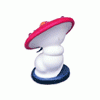-
Welcome to the eG Forums, a service of the eGullet Society for Culinary Arts & Letters. The Society is a 501(c)3 not-for-profit organization dedicated to the advancement of the culinary arts. These advertising-free forums are provided free of charge through donations from Society members. Anyone may read the forums, but to post you must create a free account.
2010 Wild Salmon Season
-
Similar Content
-
- 19 replies
- 851 views
-
- 9 replies
- 290 views
-
- 39 replies
- 3,001 views
-
- 2 replies
- 2,015 views
-
Cooking with "Six Seasons: A New Way with Vegetables," by Joshua McFadden 1 2 3 4 12
By blue_dolphin,
- 277 replies
- 82,708 views
-
-
Recently Browsing 0 members
- No registered users viewing this page.






Recommended Posts